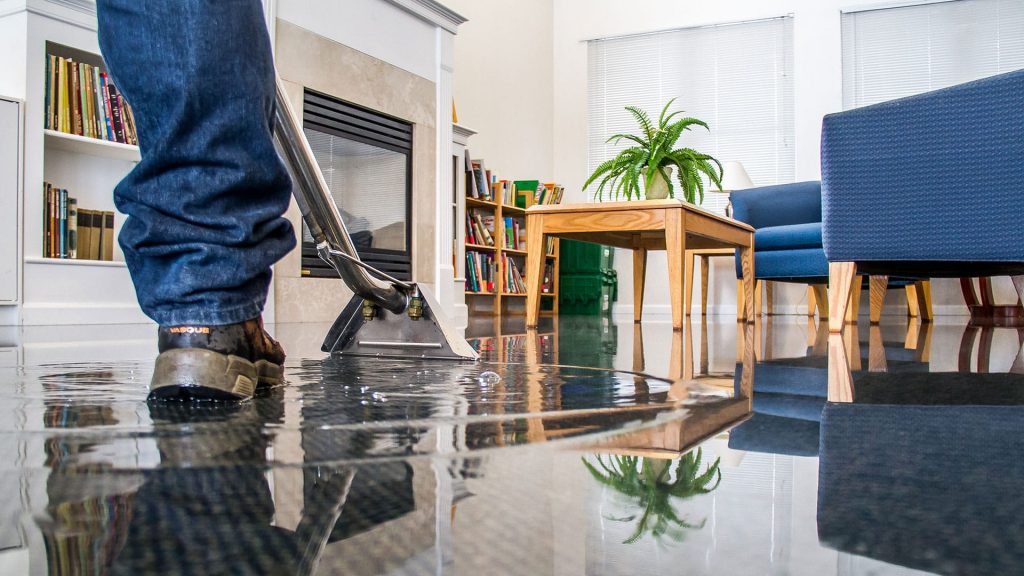6 Water Damage Reconstruction Do's and Don'ts.
6 Water Damage Reconstruction Do's and Don'ts.
Blog Article
What're your thoughts and feelings on Reducing Your Risk Of Water And Fire Damage At Home?

Water provides life, water invasion on components where it's not supposed to be can result in damage. Houses with water damages scent old and also musty.
Water can originate from many sources such as tropical cyclones, floods, ruptured pipelines, leakages, and sewer problems. In case you experience water damages, it would certainly be excellent to recognize some safety precautions. Right here are a few standards on how to handle water damages.
Do Prioritize House Insurance Policy Coverage
Water damage from flood dues to heavy winds is seasonal. However, you can likewise experience an unexpected flood when a malfunctioning pipe all of a sudden bursts into your home. It would certainly be best to have house insurance policy that covers both disasters such as all-natural catastrophes, as well as emergencies like broken plumbing.
Don't Neglect to Switch Off Energies
In the event of a disaster, especially if you live in a flood-prone area, it would be advisable to turn off the major electric circuit. This cuts off power to your whole residence, stopping electrical shocks when water comes in as it is a conductor. Moreover, do not fail to remember to turn off the major water line shutoff. When floodwaters are high, furnishings will move around and also trigger damages. Having the main shutoff turned off prevents more damage.
Do Keep Proactive as well as Heed Weather Informs
Storm floodings can be extremely uncertain. If there is a background of flooding in your neighborhood, stay positive and prepared. If you live near a river, creek, or lake , pay attention to evacuation cautions. Obtain belongings from the first stage and also basement, then placed them on the greatest possible level. Doing so minimizes potential home damage.
Do Not Neglect the Roofing System
Before the climate transforms shocking, make sure you have a roof covering examination. In fact, it would be prudent to get this solution every year as it can minimize intricate concerns. You can prevent rain damage if there are no holes and leaks in your roof. Your contractor will certainly additionally care for damaged seamless gutters or any other indicators of weakening. This will certainly avoid water from flowing down your wall surfaces as well as soaking your ceiling.
Do Pay Attention to Tiny Leaks
A burst pipeline does not occur overnight. Usually, there are warnings that show you have weakened pipelines in your home. You may see bubbling paint, peeling off wallpaper, water streaks, water discolorations, or leaking sounds behind the wall surfaces. Ultimately, this pipe will certainly burst. Preferably, you must not wait for points to escalate. Have your plumbing fixed prior to it leads to massive damages.
Do Not Panic in Case of a Burst Pipeline
Keeping your presence of mind is vital in a time of dilemma. Because it will suppress you from acting fast, stressing will just compound the trouble. Timing is essential when it comes to water damages. The longer you wait, the even more damages you can expect. Therefore, if a pipeline bursts in your home, promptly shut off your main water valve to remove the resource. Disconnect all electric outlets in the location or turn off the circuit breaker for that part of the home. Ultimately, call a reliable water damage reconstruction specialist for support.
Water offers life, water breach on components where it's not supposed to be can result in damage. Homes with water damage smell moldy and old.
Water damage from flood dues to heavy winds is seasonal. You may discover gurgling paint, peeling off wallpaper, water streaks, water discolorations, or trickling noises behind the walls. When it comes to water damage, timing is essential.
Water Damage Do's and Don'ts
Do's
Always use rubber gloves to protect your hands & rubber boots to protect your feet and legs. Damage from water and bacteria growth can begin within hours. Call for professional help. Remove as much water as possible by mopping and blotting with sponges. Pull up wet rugs and carpets if hardwood floors are below. Lift draperies off the floor, loop through a coat hanger and place the hanger on the drapery rod. Wipe furniture, prop up wet furniture cushions for even drying and place aluminum foil under furniture legs. Move photos, paintings, art objects, computers, other electronics and valuables to a safe, dry location. Do not remove books from shelves. Pack them tightly to prevent page warping until a restoration professional can begin this specialized drying. Ventilate wet areas. Turn on air conditioning for faster drying in summer (only if there is no visible mold) and winter, alternate cycles of opened windows and heating. Also, open drawers, closets and cabinet doors to enhance drying. Don'ts
Do not enter rooms where there is wet and sagging ceiling! Do not enter a room with standing water until electricity has been turned off. Do not use a regular household vacuum to remove water. Use heat to dry closed building interiors. Mildew and more moisture damage can occur. Do not use electrical appliances while on wet carpet or flooring. Do not disturb visible mold. https://www.myknowledgebroker.com/blog/personal-insurance/water-damage-dos-and-donts/

Hopefully you enjoyed our excerpt on Keeping Your Home Safe This Holiday Season. Thanks for spending some time to browse our article. Are you aware of anybody else who is excited by the topic? Please feel free to promote it. We appreciate reading our article about Ways to Reduce The Risk Of Fire And Water Damage.
Report this page